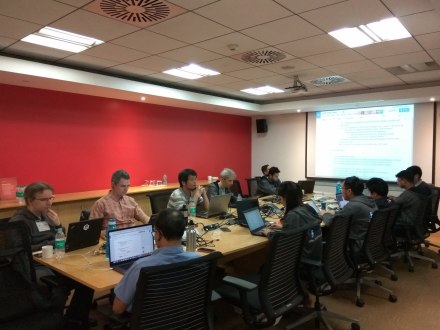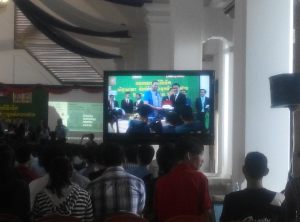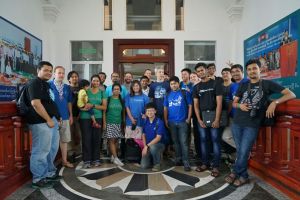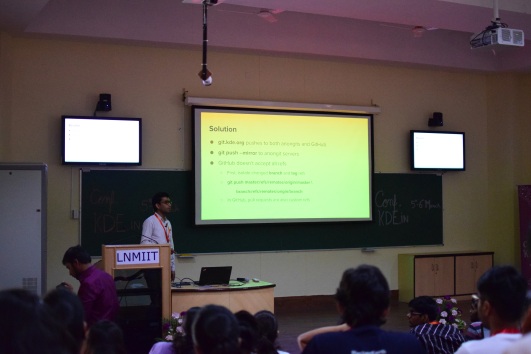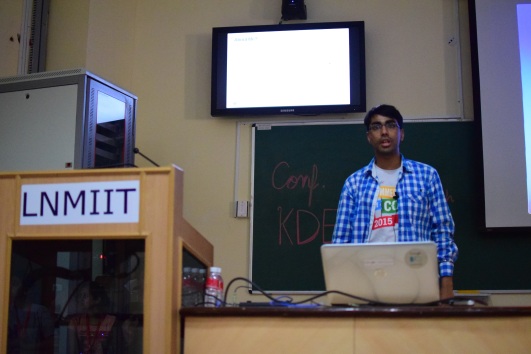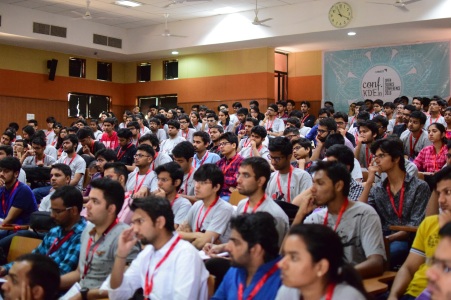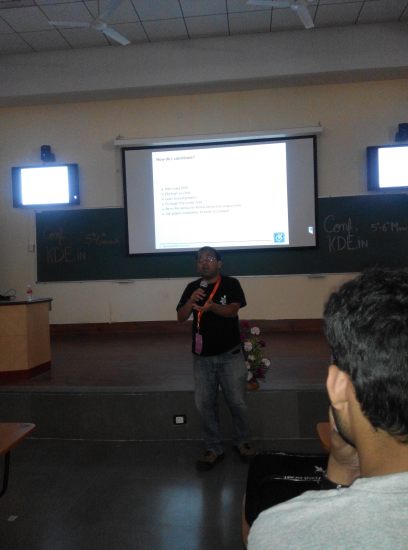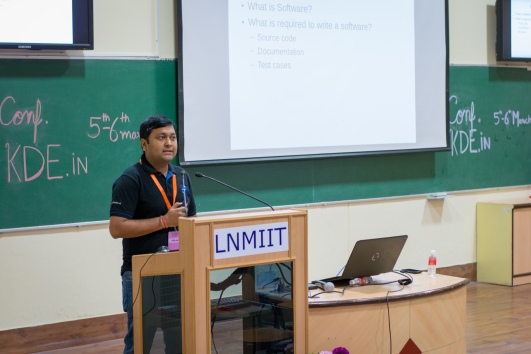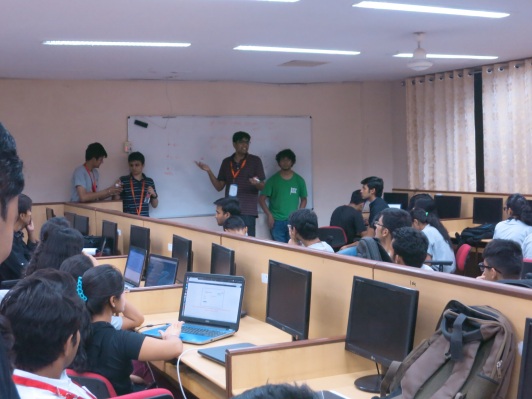Last week I attended “Flock to Fedora” conference in Budapest, Hungary. It was a Fedora contributors conference where I met some developers, project leaders, GSoC interns. Below is a brief report of my attendance.
Day 1:
The first day started with the welcome by the registration desk where I got my conference badge to wear. The conference started with the first traditional session by Matthew Miller on “The State of Fedora”. Matthew explained all about the Fedora project including Council Objectives, developing user solutions using teams that will provide Building Blocks and Services, Charts showing Fedora/EPEL mirror stats.
Next talk was a keynote talk “It’s probably fine” by Cate Huston where she talked about making failing team functional and layers of communication to achieve that.
Next talk was “Facebook Loves Fedora (and Chef)” where Michel explained how Fedora is used in Facebook and plans to use Silverblue edition. He also discussed what things need to be taken care to use fast moving Fedora releases in Facebook. Glad to hear that they moved from Ubuntu to using Fedora on their desktop machines.
After lunch I got to present langpacks demo in “The future of langpacks in Fedora” talk which is presented by Jens Petersen. We discussed how langpacks evolved since Fedora 13 and future plans about langpacks.
Next talk I attended was “Toolbox: using Silverblue for development” by Debarshi Ray where Debarshi explained all about how toolbox development started, its benefits and future development. I am glad that I am using toolbox for my Fedora development since last one month without any issues.
Next talk I attended was “Fedora CoreOS: preview to stable”. Sinny Kumari explained about Fedora CoreOS project, its features, 3 update streams that users can use to get updates. Then she demo about Fedora CoreOS by booting qcow image with qemu by generating ignition config. It was nice talk to know more about Fedora CoreOS.
The next talk was another interesting talk I found. Its “Tales from the crypt: packaging horrors” by Dominik Mierzejewski where common packaging mistakes have been discussed. I recommend all the Fedora packager who are not that experienced yet to watch this talk. You will get to learn what things one should avoid while packaging any software.
Day 2:
The second day started with the talk “Fedora, Red Hat and IBM” by Denise Dumas who is Red Hat VP of Platform engineering. She talked about how will be the future of Fedora after IBM acquisition. There is no change happening and Fedora will continue to grow.
The next talk I attended was “The future of automated build checks in Fedora CI” by Tim Flink where Tim explained about existing taskotron plans and moving tests to be executed automatically as part of CI jobs. These includes build checks like rpminspect, rpmdeplint and abicheck.
The next talk was “Auto-updates by design: porting Container Linux model to Fedora CoreOS” by Luca Bruno where Luca explained Container Linux model and Fedora CoreOS model.
The next talk was “Use cases for Transtats in the Fedora community” by Sundeep Anand where Sundeep explained about Transtats project, recent developments in it and explained how it will be helpful to Fedora community. I also given a demo on how a transtats-cli project can be helpful for developers, maintainers, translators to interact with transtats server.
After lunch I attended “Gating rawhide packages: things just got real!” by Pierre-Yves Chibon. This was a full house track where all the information about how gating works in rawhide has been discussed. Multi-build vs single build rawhide gating workflow has been explained in this talk.
The next talk was “Silverblue: On the way to the future of Fedora Workstation” by Tomáš Popela, Jiří Eischmann. Both explained about the Silverblue OS project. Its secure OS and runs cross platform applications. OS is separated from applications. OS uses ostree image. I am glad I am running Fedora Silverblue OS since last one month without any issues.
The next talk was on “Fedora Flatpaks” by Felipe Borges. He explained about Flatpaks, how to create them using existing Fedora rpms (demo). The documentation is available on Fedora docs website.
Day 3:
The third day started with the single session “The Fedora Summer Coding project showcase and meet-up” where all the interns have shown their work and then mentors panel discussed about mentorship process.
After Lunch I participated in “Fedora Internationalization CI and Test cases” hackfest where Jens introduced the audience about current status of CI and test cases for i18n. Then we discussed about i18n Changes we had in F30 and now in F31 which needs more attention and thus we endup with discussing what different kinds of test cases we can have for those Changes as well.
Then I attended Packit workshop. This is the first time I came to know more about this topic from its developers. Its developed to auto maintain upstream projects into Fedora. More on this can be also read in this blog.
Day 4:
There was a “Meet your FESCo” session where attendees got a chance to directly interact with FESCo members. Many topics were discussed in this panel discussion.
The last session of the Flock was “Flock Wrap-Up and Team Report-Out” where individual group leaders provided their outcome from their project discussions happened in this Flock.
Overall this Flock, the main topics discussed were Fedora Modularity, Fedora CI, Fedora Silverblue, Fedora CoreOS projects.
A Big thanks to Brian Exelbierd, Matthew Miller, Jen Madriaga and all other organizers who made this Flock a successful conference this year as well.


